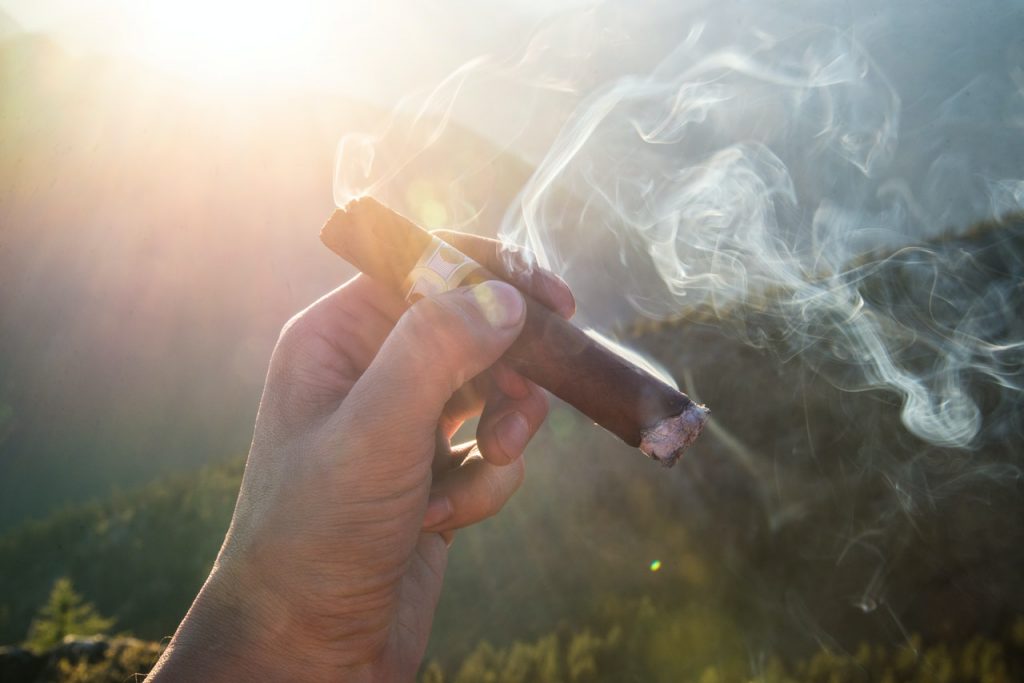
Cigars are a satisfying and enjoyable pastime throughout history. Being around for over a thousand years is proof enough that they are great products to indulge in.
Origin
Many believe that the ancient Mayans were the first inventors of a cigar as they wrapped the tobacco using palm or plantain leaves. A 10-century old-Mayan pot depicts a smoking Mayan man, which is somehow reflective of their early claim to the long history of cigars.
For many years, locals enjoyed this, until Christopher Columbus, the first Westerner to encounter tobacco in recorded history. It was not surprising that one of Columbus’s lieutenants got drawn into smoking a primitive cigar, making him smoke every day on their way back home. It is no surprise that it became popular as soon as it made its way to Spain and Portugal.
Jean Nicot, the French ambassador to Portugal, popularized cigar-smoking back in his home country from which they derived the word nicotine. In no time, it had spread to Italy and the rest of Europe. As the Spaniards were one of the pioneers in its discovery, they first developed the art of wrapping dried tobacco using a special kind of paper instead of leaves. They made a refined art out of it.
At one point, King Phillip II of Spain, along with the King of England, King James I, denounced smoking as nothing but evil. While it should be to discourage people from adopting it as part of their lifestyle, it became more popular as companies started to grow tobacco to conform to increasing consumption.
From Spain being the original place to manufacture European cigars, Cuba rose as the ideal place to do so. As to how Cuban cigars gained popularity all over the world, it is due to its climate. Spain remained driven into claiming dominance and monopoly of the cigar industry, but this made many cigar manufacturers disperse. Some had flown to Key West, Florida. Some grew their own in the Philippines, as it was at that time, a Spanish colony.
Finally, its origins extended to New York as this stands as a popular destination for cigar manufacturers. It also came to a point when numerous micro-groups of manufacturers started rolling their cigars in their apartments.
There are different types of cigars.
The Mayans created the most common one called Parejo. It was a simple rolling of tobacco leaves into a cylindrical shape similar to how modern cigarettes look now. Over a dozen different types exist, such as the Toro, Carlota, Corona. Lonsdale, Rothschild, and Churchill. These cigars are named after people who are not only famous but quite influential. They belong to the Parejo kind. The effect that these celebrities smoked publicly sent cigars even more to popularity.
In the 1800s, Cuaba cigars stood popular, though not as common as in modern times. Its irregular shape made them stand out, though expensive to manufacture, and of course, to buy. Later, it became an item to collect since it is a rare find.
For those who prefer little cigars, they have become widely popular over the last few years. They are not traditional cigars but most closely resemble modern cigarettes. The good thing is that these little cigars did not have to deal with a large tax like how today’s cigarettes are.
Cigars had established their place in society for thousands of years, tracing their journey from the “New World” back to Europe. It was the Europeans that started the industry involving tobacco. It became globally known, despite being proven to be causing cancer, including serious health issues.
Over the Years
Whether a cigar, cigarette, or with the use of a pipe, the concept of smoking may give an individual an intake in more ways than one. But smoking a well-made cigar symbolizes existence, discreet confidence, and importance.



